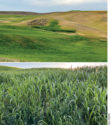Advertise Follow Us
Items Tagged with 'Idaho'
ARTICLES
Press Release
Early bird registration now open for Sioux Falls, S.D., event on May 6-7
Read More
Cover Crops Helped Growers Overcome Drought in 2023
No-tillers share how cover crops affected cash crop growth during challenging times of drought
Read More
40 Legends Of The Past 40 Years
Check out these highly talented folks who’ve had a tremendous impact on no-till since 1972.
Read More





.png?height=125&t=1731942302&width=150)




